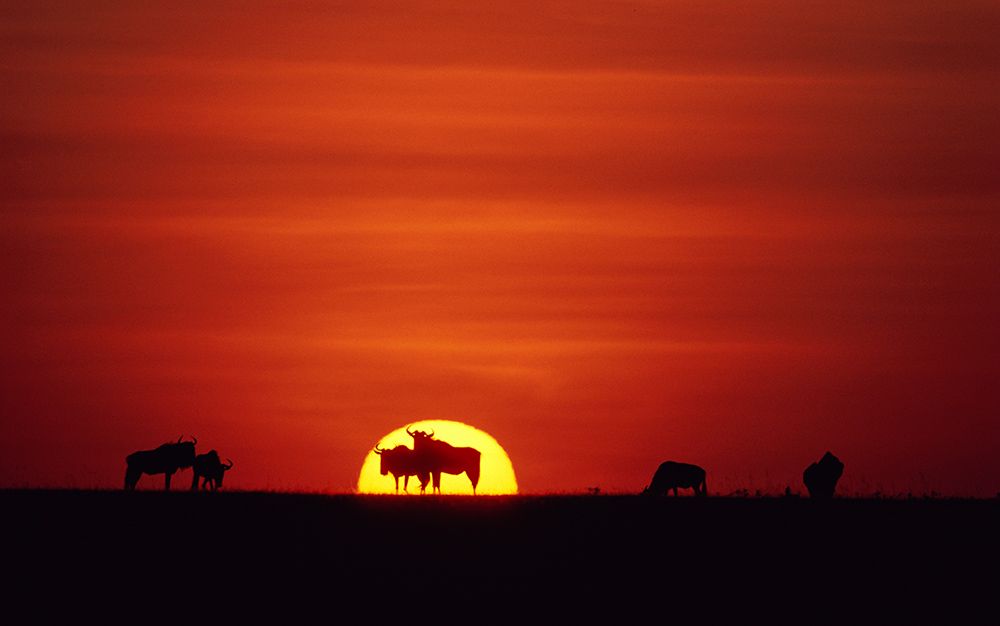Why E.O. Wilson is wrong about how to save the Earth
by Bram Büscher & Robert Fletcher

Edward O Wilson is one of the world’s most revered, reviled and referenced conservation biologists. In his new book (and Aeon essay) Half-Earth, he comes out with all guns blazing, proclaiming the terrible fate of biodiversity, the need for radical conservation, and humanity’s centrality in both. His basic message is simple: desperate times call for desperate measures, ‘only by setting aside half the planet in reserve, or more, can we save the living part of the environment and achieve the stabilization required for our own survival'. Asserting that ‘humanity’ behaves like a destructive juggernaut, Wilson is deeply concerned that the current ‘sixth extinction’ is destroying many species before scientists have even been able to identify them.

Turning half of the Earth into a series of nature parks is a grand utopian vision for conservation, perhaps even a hyperbolic one, yet Wilson seems deadly serious about it. Some environmental thinkers have been arguing the exact opposite, namely that conservation should give up its infatuation with parks and focus on ‘mixing’ people and nature in mutually conducive ways. Wilson defends a traditional view that nature needs more protection, and attacks them for being ‘unconcerned with what the consequences will be if their beliefs are played out’. As social scientists who study the impact of international conservation on peoples around the world, we would argue that it is Wilson himself who has fallen into this trap: the world he imagines in Half-Earth would be a profoundly inhumane one if ever his beliefs were ‘played out’.
The ‘nature needs half’ idea is not entirely new – it is an extreme version of a more widespread ‘land sparing’ conservation strategy. This is not about setting aside half the Earth as a whole but expanding the world’s current network of protected areas to create a patchwork grid encompassing at least half the world’s surface (and the ocean) and hence ‘about 85 percent' of the remaining biodiversity. The plan is staggering in scale: protected areas, according to the International Union for the Conservation of Nature, currently incorporate around 10-15 percent of the Earth’s terrain, so would need to more than triple in extent.
Wilson identifies a number of causes of the current ecological crisis, but is particularly concerned by overpopulation. ‘Our population,’ he argues, ‘is too large for safety and comfort… Earth’s more than 7 billion people are collectively ravenous consumers of all the planet’s inadequate bounty.’ But can we talk about the whole of humanity in such generalized terms? In reality, the world is riven by dramatic inequality, and different segments of humanity have vastly different impacts on the world’s environments. The blame for our ecological problems therefore cannot be spread across some notion of a generalized ‘humanity’.
Although Wilson is careful to qualify that it is the combination of population growth and ‘per-capita consumption’ that causes environmental degradation, he is particularly concerned about places he identifies as the remaining high-fertility problem spots – ‘Patagonia, the Middle East, Pakistan, and Afghanistan, plus all of sub-Saharan Africa exclusive of South Africa’. These are countries with some of the world’s lowest incomes. Paradoxically, then, it is those consuming the least that is considered the greatest problem. ‘Overpopulation’, it seems, is the same racialized bogeyman as ever, and the poor the greatest threat to an environmentally sound future.
Wilson’s Half-Earth vision is offered as an explicit counterpoint to so-called ‘new’ or ‘Anthropocene’ conservationists, who are loosely organized around the controversial Breakthrough Institute. For Wilson, these ‘Anthropocene ideologists’ have given up on nature altogether. In her book, Rambunctious Garden (2011), Emma Marris characteristically argues that there is no wilderness left on the Earth, which is everywhere completely transformed by the human presence. According to Anthropocene thinking, we are in charge of the Earth and must manage it closely whether we like it or not. Wilson disagrees, insisting that ‘areas of wilderness… are real entities’. He contends that an area need not be ‘pristine’ or uninhabited to be wilderness, and ‘[w]ildernesses have often contained sparse populations of people, especially those indigenous for centuries or millennia, without losing their essential character’.
Research across the globe has shown that many protected areas once contained not merely ‘sparse’ inhabitants but often quite dense populations – clearly incompatible with the US Wilderness Act’s classic definition of wilderness as an area ‘where man himself is a visitor who does not remain’. Most existing ‘wilderness’ parks have required the removal or severe restriction of human beings within their bounds. Indeed, one of Wilson’s models for conservation success – Gorongosa National Park in Mozambique – sidelined local people despite their unified opposition. In his book Conservation Refugees (2009), Mark Dowie estimates that 20-50 million people have been displaced by previous waves of protected-area creation. To extend protected areas to half of the Earth’s surface would require a relocation of human populations on a scale that could dwarf all previous conservation refugee crises.
Would these people include Montana cattle ranchers? Or Australian wheat growers? Or Florida retirees? The answer, most likely, is no, for the burden of conservation has never been shared equitably across the world. Those who both take the blame and pay the greatest cost of environmental degradation are, almost always, those who do not have power to influence either their own governments or international politics. It is the hill tribes of Thailand, the pastoralists of Tanzania, and the forest peoples of Indonesia who are invariably expected to relocate, often at gunpoint, as Dowie and many scholars, including Dan Brockington in his book Fortress Conservation (2002), have demonstrated.

What do E. O. Wilson and Christine de Pizan have in common? Find out on planksip.
How will human society withstand the shock of removing so much land and ocean from food-growing and other uses? Wilson criticizes the Anthropocene worldview’s faith that technological innovation can solve environmental problems or find substitutes for depleted resources, but he simultaneously promotes his own techno-fix in a vision of ‘intensified economic evolution’ in which ‘the free market, and the way it is increasingly shaped by high technology’ will solve the problem seemingly automatically. According to Wilson, ‘products that win competition today… are those that cost less to manufacture and advertise, need less frequent repair and replacement, and give highest performance with a minimum amount of energy’. He thus invokes a biological version of Adam Smith’s invisible hand in maintaining that ‘[j]ust as natural selection drives organic evolution by competition among genes to produce more copies of themselves per unit cost in the next generation, raising benefit-to-cost of production drives the evolution of the economy’ and asserting, without any evidence, that ‘[a]lmost all of the competition in a free market, other than in military technology, raises the average quality of life’.
Remarkably, this utopian optimism about technology and the workings of the free market leads Wilson to converge on a position rather like that of the Anthropocene conservationists he so dislikes, advocating a vision of ‘decoupling economic activity from material and environmental throughputs’ in order to create sustainable livelihoods for a population herded into urban areas to free space for self-willed nature. The Breakthrough Institute has recently promoted its own, quite similar, manifesto for land sparing and decoupling to increase terrain for conservation.
In this vision, science and technology can compensate for some of humanity’s status as the world’s ‘most destructive species’. And at the pinnacle of science stands (conservation) biology, according to Wilson. He argues: ‘If people are to live long and healthy lives in the sustainable Eden of our dreams, and our minds are to break free and dwell in the far more interesting universe of reason triumphant over superstition, it will be through advances in biology.’ How exactly humans are to ‘break free’ is not explained and is, in fact, impossible according to Wilson himself, given ‘the Darwinian propensity in our brain’s machinery to favour short-term decisions over long-range planning’. As far as Wilson is concerned, any worldview that does not favour protected-area expansion as the highest goal is by definition an irrational one. In this way, the world’s poor are blamed not only for overpopulating biodiversity hotspots but also for succumbing to the ‘religious belief and inept philosophical thought’ standing in the way of environmental Enlightenment.
Let us finish by making a broader point, drawing on Wilson’s approving quotation of Alexander von Humboldt, the 19th-century German naturalist who claimed that ‘the most dangerous worldview is the worldview of those who have not viewed the world’. In viewing the world, we also construct it, and the world Wilson’s offers us in Half-Earth is a truly bizarre one. For all his zeal, (misplaced) righteousness and passion, his vision is disturbing and dangerous, and would have profoundly negative ‘consequences if played out’. It would entail forcibly herding a drastically reduced human population into increasingly crowded urban areas to be managed in oppressively technocratic ways. How such a global programme of conservation Lebensraum would be accomplished is left to the reader’s imagination. We, therefore, hope readers will not take Wilson’s proposal seriously. Addressing biodiversity loss and other environmental problems must proceed by confronting the world’s obscene inequality, not by blaming the poor and trusting the ‘free market’ to save them.

Bram Büscher & Robert Fletcher
This article was originally published at Aeon and has been republished under Creative Commons.




